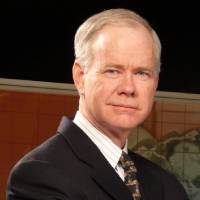
Runtime: 6:37
0:32 BMW Building New Plant for Both ICE & EV
0:58 New Silverado Has Biggest Pickup Bed
1:48 Lexus Announces 2019 ES Pricing
2:50 Ford Ponders Small Pickup for U.S.
3:26 Harley-Davidson Shows New Products
5:07 Toyota Boosts Range of Fuel Cell Semi
5:51 Uber Ends Autonomous Semi Development
Visit our sponsors to thank them for their support of Autoline Daily: Bridgestone , Dow Automotive Systems , Lear Corporation , and ExxonMobil.
On today’s show… Ford could introduce a pickup smaller than the Ranger in the U.S…. Toyota increases the range of its fuel-cell semi by more than 100 miles… and Harley-Davidson introduces a new range of motorcycles it hopes will turn the company around. All that and more coming right up on Autoline Daily.
This is Autoline Daily the show for enthusiasts of the automotive industry.
BMW BUILDING NEW PLANT FOR ICE & EVs
BMW is expanding its manufacturing footprint in Europe. The company announced it’s building a one billion euro, or about $1.2 billion dollar, facility in Hungary. The plant will have the capacity to build 150,000 vehicles a year and will be capable of producing both combustion and electrified vehicles on the same line. However, BMW did not reveal which models will be built at the new plant.
NEW SILVERADO HAS BIGGEST PICKUP BED
Americans love their trucks, and it seems like there’s always room for them to get bigger. Chevy announced that the 2019 Silverado’s bed will have a significantly increased volume compared to the outgoing model. The Silverado’s short and standard boxes will have 10 more cubic feet than their respective 2018 models, and the 2019’s long box will gain 14 cubic feet. That will make it the largest pickup bed on the market. Chevy also says it will be made of higher-strength steel and the bed floor materials will be improved. Other improvements include stronger, more accessible tie-downs and larger cutouts in the bumper for steel-toed boots. The 2019 Silverado will be available this fall.
LEXUS ANNOUNCES 2019 ES PRICING
Lexus announced pricing for the 2019 ES sedan. It starts at $39,500, not including destination charges, which is $550 more than the outgoing model. The ES300h will have 215hp, get 44 mpg, and will cost just over $41,000. As for the other trims, the ES350 is powered by a 3.5-liter V6, good for 302 hp and 25 mpg. And the performance trim, called the ES 350 F Sport, will start just over $44,000.
Still to come… Harley-Davidson introduces a new range of motorcycles.
FORD PONDERS SMALL PICKUP FOR U.S.
It was a sad day when I learned the Hyundai Santa Cruz pickup would compete in the mid-size truck segment, but it seems like Ford could fill the small truck void. Reports are starting to swirl that the automaker will launch a pickup smaller than the Ranger in the U.S. market by 2022. It would be built on the next-generation Focus platform and could be called the Courier, a name used most-recently on a Fiesta-based model for Europe and Brazil. Ford was late to the game getting the Ranger into the mid-size segment and it looks like it doesn’t want to make the same mistake twice.
HARLEY-DAVIDSON SHOWS NEW PRODUCTS
Harley-Davidson is looking to attract a new generation of riders and is showing off some interesting new products. Three new motorcycles will spawn from a modular middleweight platform with four engine displacements, ranging from 500cc to 1250cc. Harley will enter the Adventure Touring class for the first time with a bike called the Pan America, which is shown here with a 1250cc engine. There’s also a “Custom” model, again with a 1250cc engine and a 975cc “Streetfighter” model, which is a sport bike. These models are planned to launch beginning in 2020, but additional models will follow through 2022. And expanding on its LiveWire motorcycle, which comes next year, Harley will expand its no-clutch “twist and go” portfolio of electric two-wheelers. Expect to see those through 2022.
And be sure to check out our coverage of the Center for Automotive Research’s MBS conference. John is talking to the experts about new technology trends and the issues the auto industry faces. Look for those interviews throughout the week on our website, Autoline.tv.
Coming up next, Toyota gives its fuel cell semi-truck a big boost in range.
TOYOTA BOOSTS RANGE OF FUEL CELL SEMI
Toyota just unveiled its second fuel cell semi-truck and its got an estimated 300 plus miles of range. The truck is known internally as “Beta” and is an improvement on Toyota’s first fuel cell semi known as “Alpha.” Alpha has 200 miles of range and makes 670 horsepower and 1,325 lb.-ft of torque from two Mirai fuel cell stacks and a 12-kilowatt-hour battery. Since commencing operations in 2017, Alpha has been driven almost 10,000 miles doing shipping runs in the ports of Long Beach and Los Angeles. Beta will begin operating in California this fall.
UBER ENDS AUTONOMOUS SEMI DEVELOPMENT
And in other big truck news, Uber announced it’s stopping development of autonomous semi-trucks and will just focus on self-driving cars. But even though Uber won’t continue to pursue automated trucks, they’ll be one of the first vehicles seen on a wide spread basis with autonomous technology, since they mostly drive on predictable highway routes instead of busy urban environments.
But that’s it for today, thanks for watching and please join us again tomorrow.
Thanks to our partner for embedding Autoline Daily on its website: WardsAuto.com

John McElroy is an influential thought leader in the automotive industry. He is a journalist, lecturer, commentator and entrepreneur. He created “Autoline Daily,” the first industry webcast of industry news and analysis.





